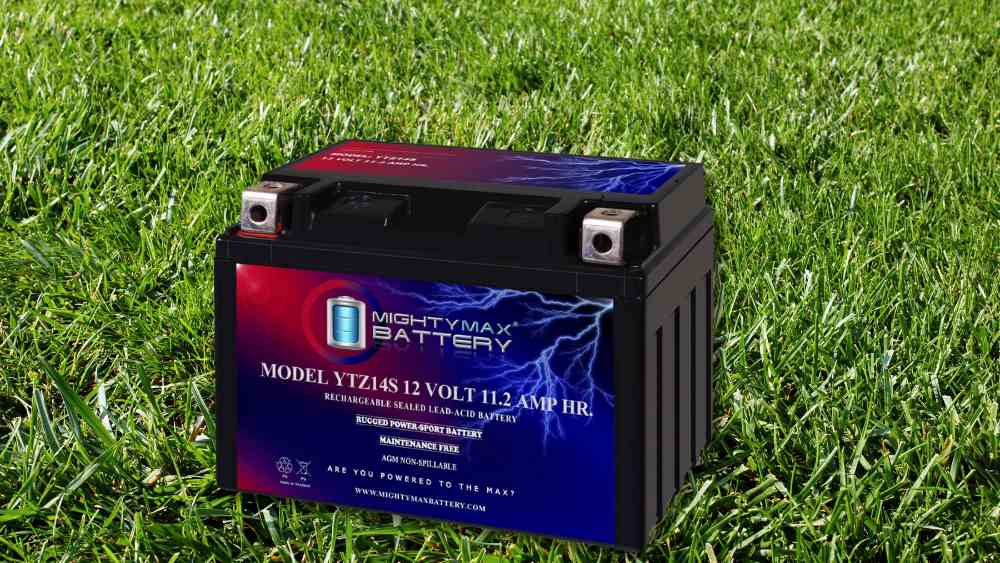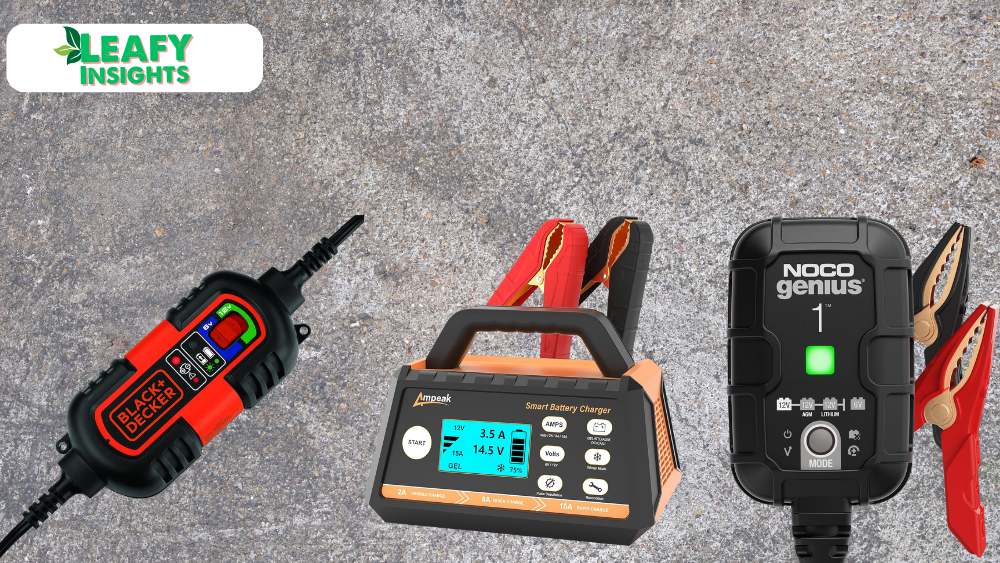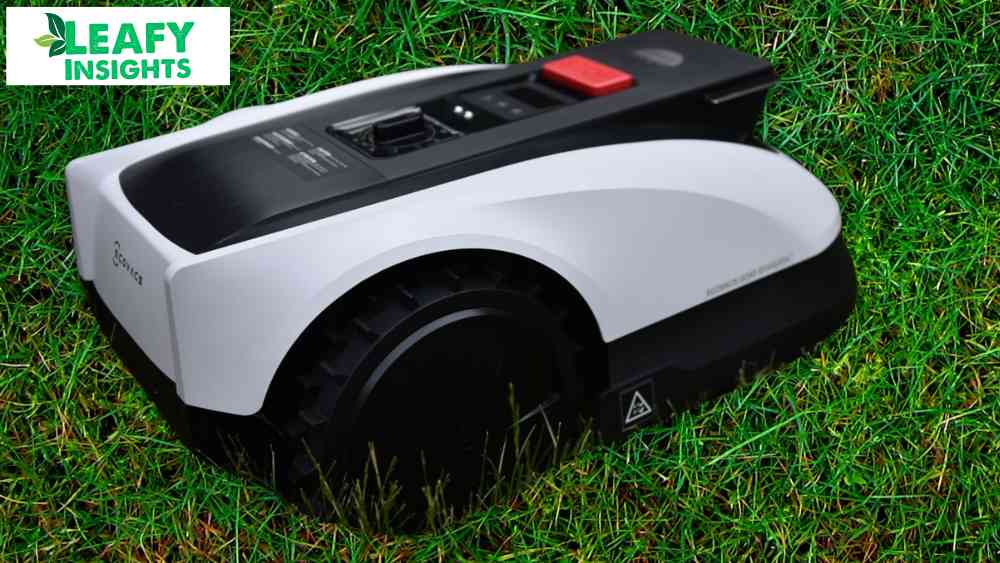Storing your lawn mower properly is crucial for maintaining its functionality, extending its lifespan, and ensuring safety. The garage is often the most practical place to store your lawn mower, but doing so correctly involves several steps and considerations. This comprehensive guide will cover everything you need to know about storing your lawn mower in the garage, from preparation and positioning to maintenance and safety tips.
Understanding the Importance of Proper Lawn Mower Storage
Before diving into the specifics of how to store a lawn mower in the garage, it’s essential to understand why proper storage is important. Lawn mowers are valuable pieces of equipment that require care to remain in good working condition. Proper storage protects your mower from environmental damage, prevents accidental injuries, and ensures it’s ready to use when the mowing season begins again.
Protection from Environmental Damage
- Weather Elements: Exposure to rain, snow, and humidity can cause rust and corrosion on metal parts, leading to structural damage. Additionally, UV rays can degrade plastic components over time, making them brittle and prone to cracking.
- Temperature Fluctuations: Extreme cold or heat can negatively affect the engine and battery of the lawn mower. Cold temperatures can cause the oil to thicken, making it difficult to start the engine, while excessive heat can degrade battery life and lead to evaporation of fuel.
Preventing Accidental Injuries
- Children and Pets: A lawn mower left out in the open can be a hazard, especially for children and pets who might play around it. Sharp blades and engine parts can cause serious injuries if accidentally touched or triggered.
- Tripping Hazards: Properly storing your lawn mower in the garage reduces the risk of trips and falls. Ensuring it is out of high-traffic areas and securely positioned minimizes the likelihood of accidents.
Ensuring Readiness for Use
- Maintenance and Repairs: Storing your lawn mower correctly allows for easy access to perform regular maintenance and quick repairs. This helps in keeping the mower in optimal condition, so it is always ready for use when the mowing season begins.
- Longevity and Performance: Proper storage extends the lifespan of your lawn mower. By protecting it from environmental damage and ensuring regular maintenance, you maintain its performance and efficiency, ultimately saving money on repairs and replacements.
Enhanced Security
- Theft Prevention: Storing your lawn mower in the garage significantly reduces the risk of theft. Garages offer a more secure environment compared to leaving the mower outside, where it can be easily stolen.
- Protection from Vandalism: Keeping your lawn mower in the garage also protects it from potential vandalism or damage caused by animals, ensuring it remains in good working condition.
Organized Storage Space
- Efficient Use of Space: Properly storing your lawn mower in the garage helps in organizing the space efficiently. By using racks, shelves, and designated areas for different tools and equipment, you can keep your garage neat and maximize available storage space.
- Accessibility: A well-organized garage ensures that your lawn mower is easily accessible when needed. This reduces the time and effort spent searching for the mower and other tools, making your lawn care routine more efficient.
Seasonal Considerations
- Winter Storage: During the winter months, lawn mowers are typically not in use. Proper storage during this period is crucial to protect the mower from cold temperatures and to perform necessary maintenance tasks before storing it away.
- Spring Preparation: Proper storage ensures that your lawn mower is in good condition and ready for use as soon as the mowing season begins in spring. This involves checking the mower, performing any required maintenance, and ensuring that all parts are functioning correctly.
Understanding the importance of proper lawn mower storage underscores the need for meticulous care and attention. By protecting your mower from environmental damage, preventing accidental injuries, ensuring readiness for use, enhancing security, organizing your storage space, and considering seasonal requirements, you can maintain the longevity and performance of your valuable equipment. Proper storage is not just about finding a place to keep the mower; it’s about ensuring it remains in optimal condition and is always ready for action.
Why Store Your Lawnmower in the Garage?
Proper storage of your lawn mower is crucial for maintaining its longevity and ensuring its performance remains optimal. Storing your lawn mower in the garage offers several significant advantages. These benefits not only enhance the mower’s lifespan but also provide convenience and security. Here’s an in-depth look at why you should store your lawn mower in the garage.
Protection from the Elements
- Controlled Environment: Garages offer a controlled environment that shields your mower from harsh weather conditions. Unlike outdoor storage, a garage provides protection from rain, snow, and extreme temperatures that can adversely affect your mower.
- Rain and Moisture: Exposure to rain can cause rust and corrosion on the metal parts of your lawn mower. Storing the mower in the garage prevents moisture from causing such damage, ensuring that the metal components remain intact and functional.
- Snow and Ice: Cold weather can cause oil and fuel to thicken, making it difficult to start the mower. Snow and ice can also lead to freezing of parts and potential damage. A garage keeps your mower safe from these freezing conditions.
- UV Rays: Prolonged exposure to UV rays can degrade plastic components, making them brittle and prone to breaking. The garage provides shade and protection from the sun, preserving the integrity of plastic parts.
Enhanced Security
- Theft Prevention: Garages add an extra layer of security, reducing the risk of theft. Lawn mowers left outside are easy targets for thieves, but storing them in a locked garage minimizes this risk.
- Vandalism Protection: Storing your mower in the garage protects it from potential vandalism or accidental damage caused by animals or passersby. This ensures that your equipment remains in good working condition.
Increased Longevity
- Minimized Wear and Tear: A dry, stable environment in the garage helps minimize wear and tear on your mower. Exposure to the elements can accelerate the degradation of various parts, but storing it in the garage slows this process, extending the mower’s lifespan.
- Engine and Fuel Protection: Garages help protect the engine and fuel system from environmental damage. Cold and heat can adversely affect engine components and fuel quality, but a garage maintains a more stable temperature, safeguarding these parts.
Convenience
- Easy Access: Keeping your lawn mower in the garage makes it easily accessible for routine maintenance and quick repairs. This convenience is especially beneficial during the mowing season when regular upkeep is necessary.
- Organized Storage: A well-organized garage allows you to store the mower along with other gardening tools and equipment. This organization makes it easier to find and access the mower and other tools when needed.
- Seasonal Maintenance: Storing the mower in the garage facilitates seasonal maintenance tasks. During the off-season, you can easily perform necessary checks and repairs, ensuring that the mower is ready for use when the season begins.
Additional Considerations
- Space Management: Utilizing garage space for storing your lawn mower helps in managing storage efficiently. You can use racks, shelves, and hooks to organize tools and equipment, maximizing the available space in your garage.
- Safety: Storing your lawn mower in the garage enhances safety for your household. It reduces the risk of children or pets accidentally coming into contact with sharp blades or hazardous parts.
- Temperature Control: Garages typically offer a more stable temperature environment compared to outdoor conditions. This stability is beneficial for maintaining the mower’s parts and ensuring consistent performance.
Storing your lawn mower in the garage is a practical and effective way to protect your investment. The controlled environment of a garage shields the mower from environmental damage, enhances security, increases its longevity, and offers convenient access for maintenance and repairs. By utilizing the garage space efficiently and considering additional safety and storage measures, you ensure that your lawn mower remains in optimal condition and is ready for use whenever needed. Proper storage is a key factor in maintaining the performance and durability of your lawn mower, making it a worthwhile consideration for any homeowner.
Common Storage Mistakes to Avoid
Proper storage of your lawn mower is essential for ensuring its longevity and maintaining its performance. However, many homeowners make mistakes that can lead to damage or decreased functionality of their mowers. Here are some common storage mistakes to avoid:
Leaving Fuel in the Tank
- Gumming Up Fuel Lines and Carburetor: One of the most common mistakes is leaving fuel in the tank during storage. Over time, the fuel can break down and create a sticky residue that clogs the fuel lines and carburetor. This can make it difficult to start the mower when you need it.
- Fuel Stabilizer: If you must store fuel in the mower, use a fuel stabilizer to prevent the fuel from degrading. However, the best practice is to drain the fuel or run the engine until the tank is empty before storing the mower.
- Preventing Engine Damage: Old fuel can cause engine damage and reduce the efficiency of the mower. By ensuring the tank is empty or treated with a stabilizer, you can prevent these issues and keep your mower in good working condition.
Improper Cleaning
- Debris Buildup: Failing to clean the mower before storage can lead to a buildup of grass clippings, dirt, and debris. This buildup can cause corrosion and damage to the mower’s components, particularly the undercarriage and blades.
- Cleaning Routine: Before storing your mower, thoroughly clean the deck, blades, and all other parts. Remove any stuck-on grass and debris to prevent rust and other damage.
- Airflow and Cooling: Debris can also block airflow and cooling mechanisms, leading to overheating and potential engine damage. Regular cleaning helps maintain proper airflow and cooling, extending the life of your mower.
Neglecting Maintenance
- Skipping Essential Maintenance: Many people overlook essential maintenance tasks before storing their mower. This includes changing the oil, replacing the air filter, and inspecting the spark plug.
- Routine Checks: Perform routine checks and maintenance tasks to ensure that your mower is in good condition before storage. This will help you avoid more significant problems when you need to use the mower again.
- Blade Care: Sharpen or replace the blades as necessary. Dull or damaged blades can cause uneven cuts and put additional strain on the engine. Ensuring the blades are sharp and in good condition is a critical maintenance task.
Poor Positioning
- Exposure to Impacts: Storing the mower in a spot where it’s exposed to potential impacts or falls can cause physical damage. Ensure that the mower is stored in a safe, secure location where it is not at risk of being knocked over or hit by other objects.
- Fluid Leaks: Storing the mower on an uneven surface or in a way that allows fluids to leak can create hazards and damage the mower. Make sure the mower is on a flat, stable surface to prevent oil, fuel, and other fluids from leaking and causing damage.
- Safe Storage Space: Choose a storage space that is dry and well-ventilated. Avoid areas with high humidity or where the mower could be exposed to excessive moisture, as this can lead to rust and corrosion.
Additional Storage Tips
- Disconnect the Spark Plug Wire: For added safety, disconnect the spark plug wire to ensure that the mower cannot start accidentally while in storage. This simple step can prevent accidental injuries.
- Fold Down the Handle: If your mower has a foldable handle, fold it down to save space and prevent the handle from being damaged or bent while in storage.
- Cover the Mower: Use a breathable cover to protect the mower from dust and debris while it’s in storage. Avoid plastic covers that can trap moisture and cause rust.
- Use a Pallet: If you need to store the mower on a concrete floor, consider placing it on a wooden pallet to keep it off the ground. This can help prevent moisture from causing rust on the mower’s undercarriage.
By avoiding these common storage mistakes and following best practices, you can ensure that your lawn mower remains in good condition and is ready for use when the mowing season begins again. Proper storage is a key aspect of lawn mower maintenance that can significantly extend the life of your equipment.
Preparing Your Lawn Mower for Storage
Before you store your lawn mower in the garage, it’s crucial to prepare it properly. This involves cleaning, performing maintenance tasks, and ensuring it’s safe to store.
Cleaning Your Lawn Mower
A thorough cleaning is the first step in preparing your lawn mower for storage. Removing dirt, grass clippings, and other debris prevents corrosion and ensures the mower stays in good condition.
Steps to Clean Your Lawn Mower
- Disconnect the Spark Plug: Always start by disconnecting the spark plug to prevent accidental starts. This is a critical safety step that ensures the mower won’t start while you’re working on it.
- Remove Grass and Debris: Use a brush or air compressor to clean off grass clippings and debris from the mower’s exterior. Pay special attention to the areas around the wheels and the engine, where debris can accumulate.
- Clean the Undercarriage: Tilt the mower carefully to access the underside. Use a garden hose or pressure washer to clean the undercarriage, but be cautious with the water pressure to avoid damaging any components. Scrub with a brush to remove stuck-on grass and mud.
- Dry Thoroughly: After cleaning, allow the mower to dry completely to prevent rust. You can use a towel to wipe down the surfaces and then let the mower air dry for a few hours.
Performing Essential Maintenance Tasks
Proper maintenance is crucial before storing your lawn mower for an extended period. This ensures that the mower will be in good working order when you need it again.
Maintenance Tasks to Perform
- Change the Oil: Refer to your owner’s manual for instructions on how to change the oil. Fresh oil helps protect the engine from rust and corrosion during storage.
- Replace or Clean the Air Filter: A clean air filter ensures that your mower runs efficiently. Check the filter and replace it if it’s dirty or damaged.
- Inspect the Spark Plug: Remove the spark plug and inspect it for wear. If it’s dirty or corroded, clean it or replace it with a new one.
- Sharpen or Replace Blades: Check the mower blades for sharpness. Sharpen them if they’re dull or replace them if they’re damaged. Sharp blades ensure a clean cut and reduce strain on the mower’s engine.
- Inspect Belts and Cables: Check all belts and cables for signs of wear or damage. Replace any that are frayed or broken to avoid issues when you start using the mower again.
- Lubricate Moving Parts: Apply lubricant to all moving parts, including the wheels and handle joints, to keep them functioning smoothly and prevent rust.
Ensuring Safety for Storage
Safety should always be a priority when preparing your lawn mower for storage. Taking a few extra precautions can prevent accidents and damage to your equipment.
Safety Steps to Follow
- Disconnect the Spark Plug Wire: For added safety, disconnect the spark plug wire to ensure that the mower cannot start accidentally while in storage.
- Drain the Fuel: Either run the engine until the fuel tank is empty or use a siphon to drain the fuel. Leftover fuel can gum up the carburetor and fuel lines, leading to starting problems.
- Check for Fluid Leaks: Inspect the mower for any signs of oil or fuel leaks. Fix any leaks before storing the mower to prevent damage and ensure it’s ready to use when needed.
- Secure the Mower: If your mower has a foldable handle, fold it down to save space and prevent the handle from being damaged or bent while in storage.
- Cover the Mower: Use a breathable cover to protect the mower from dust and debris while it’s in storage. Avoid plastic covers that can trap moisture and cause rust.
Additional Tips for Optimal Storage
- Use a Pallet: If you need to store the mower on a concrete floor, consider placing it on a wooden pallet to keep it off the ground. This can help prevent moisture from causing rust on the mower’s undercarriage.
- Label and Store Accessories: Keep all accessories and attachments in a labeled container nearby so they are easily accessible when needed.
- Regular Checks: Even during the off-season, periodically check on your stored mower to ensure it remains in good condition. Look for any signs of rust, leaks, or other issues that may have developed.
By thoroughly preparing your lawn mower for storage, you ensure that it will be in optimal condition when it’s time to use it again. Proper cleaning, maintenance, and safety measures are essential to extending the life of your lawn mower and maintaining its performance.
Draining Fuel and Oil
Properly draining the fuel and oil from your lawn mower before storage is a crucial step in preventing damage and ensuring the machine operates efficiently when you need it again. Here’s how you can do it effectively:
How to Drain Fuel
- Run the Engine: The simplest way to ensure all fuel is drained is to run the mower until it completely runs out of fuel. This step guarantees that the carburetor is empty, preventing any leftover fuel from gumming up and clogging the fuel lines or carburetor.
- Use a Siphon Pump: If there’s still fuel left in the tank after running the mower, use a siphon pump to remove the remaining fuel. This method is effective for completely emptying the tank without running the engine dry.
- Add Fuel Stabilizer: If you decide to leave some fuel in the tank, add a fuel stabilizer to prevent the fuel from deteriorating over the storage period. Follow the instructions on the stabilizer bottle for the correct amount to use.
Changing the Oil
Changing the oil in your lawn mower is essential to remove any contaminants that could harm the engine over time. Here’s a step-by-step guide:
- Locate the Oil Drain Plug: Consult your owner’s manual to find the exact location of the oil drain plug on your mower.
- Drain the Old Oil: Place an oil pan under the drain plug. Remove the plug and allow the old oil to flow out completely. This process might take a few minutes, so be patient to ensure all the oil drains out.
- Replace with Fresh Oil: Once the old oil is completely drained, reinstall the drain plug securely. Refill the engine with fresh oil as per the manufacturer’s specifications. Make sure not to overfill; check the oil level with the dipstick.
Disconnecting the Battery or Spark Plug
To prevent accidental starts and protect the battery during storage, it’s advisable to disconnect the spark plug or remove the battery. Here’s how to do both:
How to Disconnect the Spark Plug
- Locate the Spark Plug: Typically, the spark plug is located at the front of the engine and covered by a rubber boot.
- Remove the Spark Plug Wire: Gently pull the rubber boot to disconnect the wire from the spark plug. This step ensures that the engine cannot accidentally start while in storage, which is crucial for safety.
Removing the Battery
- Locate the Battery: Refer to your owner’s manual if you’re unsure where the battery is located. It’s usually found under the seat or in a compartment on the mower’s body.
- Disconnect the Cables: Always start by disconnecting the negative (black) cable first, followed by the positive (red) cable. This sequence prevents short circuits.
- Remove the Battery: Carefully lift the battery out of its compartment and store it in a cool, dry place. If possible, store the battery on a wooden surface to avoid direct contact with concrete, which can discharge the battery over time.
Additional Maintenance Tasks
Besides draining the fuel and changing the oil, there are other critical maintenance tasks to perform before storing your lawn mower. These steps ensure that all components are in good working order and ready for use in the next season.
Sharpen or Replace Blades
Sharp blades are crucial for a clean cut and reduce the strain on the mower’s engine. Here’s how to manage your mower blades before storage:
- Remove the Blades: Use a wrench to unscrew the bolts holding the blades in place. Wear gloves to protect your hands.
- Inspect the Blades: Check for any significant damage or dullness. If the blades are nicked or bent, consider replacing them.
- Sharpen the Blades: If the blades are just dull, use a sharpening stone or file to sharpen them. Follow the original angle of the blade edge to ensure even sharpening.
- Reattach the Blades: Once sharpened, reattach the blades securely. Ensure that the bolts are tight to avoid any accidents during operation.
Clean or Replace the Air Filter
A clean air filter ensures that the engine receives clean air, which is essential for efficient combustion. Here’s how to maintain the air filter:
- Locate the Air Filter: Refer to your owner’s manual to find the air filter compartment.
- Inspect the Filter: Remove the air filter and check its condition. If it’s clogged or dirty, it needs cleaning or replacement.
- Clean the Filter: If the filter is reusable, clean it with warm, soapy water and let it dry completely before reinstalling. For paper filters, use compressed air to blow out the dust.
- Replace the Filter: If the filter is damaged or excessively dirty, replace it with a new one as per the manufacturer’s recommendations.
Lubricate Moving Parts
Proper lubrication of moving parts prevents rust and ensures smooth operation. Here’s how to do it:
- Identify Moving Parts: Check the wheels, handle joints, and any other moving components.
- Apply Lubricant: Use a suitable lubricant, such as silicone spray or light machine oil, to lubricate these parts. Wipe off any excess to prevent dirt from sticking.
Check Belts and Cables
Inspecting belts and cables helps identify wear and prevents breakdowns. Here’s how:
- Inspect Belts: Check all belts for signs of wear or fraying. Replace any belts that look worn out.
- Check Cables: Look at the cables for any damage or wear. Replace damaged cables to ensure the mower operates correctly.
By thoroughly preparing your lawn mower for storage, you ensure that it will be in optimal condition when it’s time to use it again. Proper cleaning, maintenance, and safety measures are essential to extending the life of your lawn mower and maintaining its performance.
Keep the Mower Elevated
If possible, store your mower on a platform or shelf to keep it off the ground. This practice helps prevent moisture from the floor causing rust or other damage. If you don’t have a platform, placing the mower on a wooden pallet can serve the same purpose.
Utilize Protective Covers
Using a breathable cover to protect your mower from dust and debris during storage is highly recommended. Avoid plastic covers, as they can trap moisture and lead to rust. Instead, use a cover made from a material that allows air circulation.
Label and Store Accessories
Keeping all accessories and attachments in a labeled container ensures that they are easily accessible when needed. This practice helps in organizing your garage and makes it easier to find parts when it’s time to use the mower again.
Periodic Checks
Even during the off-season, it’s wise to periodically check on your stored mower. Look for any signs of rust, leaks, or other issues that may have developed. Regular checks help ensure that any potential problems are addressed promptly.
By following these steps and taking a thorough approach to maintenance and preparation, you ensure that your lawn mower remains in excellent condition, ready for the next mowing season. Proper storage not only extends the life of your mower but also ensures that it operates efficiently and reliably when you need it.
Positioning Your Lawn Mower in the Garage
Properly positioning your lawn mower in the garage is not just about finding a spot—it’s about ensuring safety, accessibility, and maximizing space efficiency. Here’s how to effectively position your mower for storage:
Finding the Right Spot
- Accessibility: Choose a location that allows easy access to your mower without obstructing other items or pathways in the garage. This spot should be readily accessible when you need to pull the mower out for maintenance or use.
- Flat Surface: Place your mower on a flat, level surface to prevent any fluid leaks and ensure stability. A flat surface also reduces the risk of the mower tipping over, especially if it has a full gas tank or attachments.
- Away from Heat Sources: Keep the mower away from direct heat sources such as water heaters, furnaces, or open flames. Heat can damage the mower’s components and pose fire hazards, especially if there are fuel residues present.
Utilizing Space Efficiently
- Corner Storage: Utilize corners of the garage to store your mower. Corner storage keeps the mower out of the main pathway while still being accessible when needed. It also frees up central garage space for other items.
- Under Shelves: If your mower has a folding handle or compact design, consider storing it under sturdy shelves. This not only protects the mower but also maximizes vertical space in your garage for other storage needs.
- Vertical Storage: Some mowers, particularly those with foldable handles or compact designs, can be stored vertically. Check your owner’s manual to see if vertical storage is recommended for your specific model. This method saves floor space and can be an efficient storage solution if feasible.
Installing Shelves and Rack
Installing shelves and racks in your garage not only organizes the space but also provides dedicated storage for your lawn mower and related equipment.
Choosing Shelves
- Heavy-Duty Shelves: Opt for sturdy, heavy-duty shelves capable of supporting the weight of your mower and any additional lawn care items. The shelves should be securely mounted to the walls or freestanding units to ensure stability.
- Custom Shelves: Consider building or installing custom shelves tailored to fit the dimensions of your mower. Custom shelves can maximize space efficiency and ensure a perfect fit for your specific storage needs.
Installing Racks
- Wall-Mounted Racks: Use wall-mounted racks to store lightweight mowers or mower attachments. These racks keep the items off the floor, reducing clutter and making them easy to access.
- Ceiling Racks: For long-term storage or if space is limited, install ceiling-mounted racks to store your mower overhead. Ceiling racks are ideal for seasonal storage and can be adjusted to accommodate different mower sizes.
Properly positioning your lawn mower in the garage involves strategic planning to ensure safety, accessibility, and efficient use of space. By finding the right spot, utilizing space efficiently with shelves and racks, and considering the layout of your garage, you can protect your mower from damage and maximize garage organization. Implementing these storage solutions not only keeps your garage tidy but also ensures that your mower remains in excellent condition for reliable performance season after season.
Maintenance Tasks Before Storing Your Lawn Mower
Performing maintenance tasks before storing your lawn mower is essential to ensure it remains in top condition and ready for reliable performance when you need it again. Here are key maintenance tasks you should complete before storing your mower:
Sharpening or Replacing Blades
Sharp blades are critical for maintaining a healthy lawn. Dull blades can tear grass instead of cleanly cutting it, which can lead to lawn stress and disease.
How to Sharpen Blades:
- Disconnect the Spark Plug: Always disconnect the spark plug wire to prevent accidental starts.
- Remove the Blade: Use a wrench to remove the bolt securing the blade to the mower deck.
- Sharpen the Blade: Use a file or bench grinder to sharpen the blade, following the original cutting angle. Ensure both ends of the blade are sharpened evenly.
- Balance the Blade: After sharpening, check the balance of the blade by placing it on a balancing tool or a nail through the center hole. Adjust by grinding more material off the heavier end if necessary.
- Reattach the Blade: Securely reattach the blade to the mower deck using the bolt and tighten it to the manufacturer’s specifications.
Replacing the Air Filter
A clean air filter is essential for optimal engine performance and efficiency. It prevents dust and debris from entering the engine, ensuring proper air intake for combustion.
How to Replace the Air Filter:
- Locate the Air Filter: Consult your mower’s owner’s manual to find the air filter compartment. It is usually located near the engine or under a cover.
- Remove the Filter: Depending on the mower model, the air filter may be held in place by screws, clips, or a cover. Carefully remove these to access the filter.
- Inspect the Filter: Examine the old air filter for dirt, damage, or excessive wear. If it’s a reusable type, you can clean it using compressed air or by washing it with mild soap and water. Allow it to dry completely before reinstalling.
- Replace or Clean: If the air filter is disposable or severely clogged, replace it with a new filter of the same type and size. Ensure it fits snugly in the compartment.
- Reinstall the Filter: Insert the clean or new filter back into the compartment, making sure it is properly seated. Secure the cover or housing to prevent any air leaks.
Changing the Spark Plug (Optional)
While not always necessary before storage, changing the spark plug can improve starting performance and overall engine operation, especially if the current plug is worn or fouled.
How to Change the Spark Plug:
- Locate the Spark Plug: The spark plug is typically located near the engine’s cylinder head and can be identified by a rubber or plastic boot covering the terminal.
- Remove the Spark Plug: Use a spark plug socket wrench to carefully loosen and remove the spark plug. Be cautious not to damage the threads.
- Inspect the Spark Plug: Check the spark plug for signs of wear, corrosion, or carbon buildup. If necessary, clean the plug with a wire brush and inspect the gap according to manufacturer specifications.
- Replace the Spark Plug (Optional): If the spark plug is old or damaged, replace it with a new spark plug of the recommended type and heat range. Ensure the spark plug is properly gapped before installation.
- Reinstall the Spark Plug: Carefully thread the new or cleaned spark plug into the engine by hand to avoid cross-threading. Use the spark plug socket wrench to tighten it to the specified torque setting.
Completing these maintenance tasks before storing your lawn mower ensures that it will be in optimal condition when you retrieve it for the next mowing season. Sharp blades, a clean air filter, and optionally a new spark plug will contribute to efficient operation and extend the lifespan of your mower. By following these steps, you’ll be well-prepared to store your mower safely and maintain its performance year after year.
Lubricating Moving Parts
Lubrication is crucial for maintaining the smooth operation of your lawn mower and extending its lifespan by reducing friction and wear on moving components.
How to Lubricate:
- Identify Moving Parts: Focus on parts such as wheels, axles, pulleys, and joints that experience movement during mower operation.
- Clean the Areas: Before applying lubricant, clean the surfaces thoroughly to remove dirt, grass clippings, and debris. Use a rag or brush to ensure the parts are free of any contaminants.
- Apply Lubricant: Choose a high-quality machine oil or lubricant suitable for outdoor equipment. Apply a small amount directly to the moving parts. Ensure you apply enough to create a thin, even coat without over-lubricating.
- Wipe Excess: After applying the lubricant, use a clean rag to wipe away any excess. This prevents dirt and debris from sticking to the excess oil, which can cause buildup and potentially damage the mower over time.
- Rotate the Parts: For parts like wheels or pulleys, rotate them by hand a few times after applying the lubricant to ensure it spreads evenly across the surfaces.
- Repeat Regularly: Lubrication should be done periodically throughout the mowing season and before storing the mower for an extended period. This helps maintain optimal performance and prevents rust or corrosion on metal parts.
Tightening Fasteners
Fasteners such as bolts, screws, and nuts play a critical role in holding your mower together. Loose fasteners can lead to parts becoming misaligned or even falling off during operation, potentially causing damage or safety hazards.
How to Tighten Fasteners:
- Inspect All Fasteners: Before tightening, inspect all visible bolts, screws, nuts, and other fasteners on your mower. Look for any that appear loose, damaged, or missing.
- Use the Appropriate Tools: Depending on the type of fastener, use the correct tools such as a wrench, socket set, or screwdriver. Ensure the tool fits snugly to avoid damaging the fastener heads.
- Tighten as Needed: Carefully tighten each fastener according to the manufacturer’s specifications. Avoid over-tightening, which can strip threads or break bolts.
- Replace Worn Fasteners: If you notice any fasteners that are stripped, rusted, or otherwise damaged beyond repair, replace them with new ones of the same size and type. This ensures the integrity and safety of your mower.
- Check Periodically: Fasteners can loosen over time due to vibration and usage. Periodically check and tighten them throughout the mowing season to maintain stability and safety.
Properly lubricating moving parts and tightening fasteners are essential maintenance tasks that contribute to the overall performance and longevity of your lawn mower. By incorporating these steps into your mower care routine, you can ensure smooth operation, reduce the risk of mechanical issues, and extend the lifespan of your equipment. Regular maintenance not only enhances mower performance but also enhances safety during use.
Advanced Storage Techniques
While basic storage methods are effective, advanced techniques can maximize garage space utilization and provide added protection for your lawn mower. Here are some advanced storage options to consider:
Vertical Storage
Storing your mower vertically is a space-efficient solution, but it requires careful preparation and consideration of your mower’s design.
Steps for Vertical Storage:
- Check Compatibility: Not all mowers are suitable for vertical storage. Consult your owner’s manual to confirm if your mower is designed for this method.
- Drain Fluids: Before storing vertically, completely drain the mower of fuel and oil to prevent leaks and potential hazards.
- Secure the Mower: Position the mower upright against a garage wall or on a specially designed stand that supports the mower’s weight evenly.
- Use Wall Hooks: Install heavy-duty hooks or brackets securely into wall studs. These hooks will prevent the mower from tipping over and ensure stable vertical storage.
Ceiling Rack Storage
Ceiling racks are ideal for lifting your mower off the floor, freeing up valuable garage space for other equipment and storage needs.
Installing Ceiling Racks:
- Choose the Right Rack: Select a ceiling rack system designed to support the weight and dimensions of your specific lawn mower. Ensure it’s rated for outdoor equipment storage.
- Find Studs: Locate ceiling joists or studs using a stud finder. Ceiling racks must be securely anchored into solid wood to bear the weight of your mower.
- Install the Rack: Follow the manufacturer’s instructions carefully for mounting the ceiling rack. Use appropriate hardware provided with the rack system.
- Lift and Secure the Mower: Utilize a pulley system or lift mechanism to raise the mower to the ceiling rack level. Ensure the mower is securely fastened to the rack to prevent accidental falls.
Additional Tips for Advanced Storage
- Use Protective Covers: Consider covering your mower with a durable, weather-resistant cover when stored vertically or on ceiling racks to protect it from dust and moisture.
- Regular Inspection: Periodically inspect the storage area and mounting hardware to ensure everything remains secure and stable.
- Accessibility: While advanced storage methods save space, ensure your mower remains accessible for maintenance and seasonal use.
Implementing advanced storage techniques such as vertical storage and ceiling racks not only optimizes garage space but also enhances protection for your lawn mower. These methods help minimize clutter, prevent damage from garage floor hazards, and improve overall organization. Prioritize safety and proper installation to maximize the benefits of advanced storage solutions for your valuable lawn care equipment.
Safety Considerations for Storing Your Lawn Mower
Safety should always be a top priority when storing your lawn mower in the garage. Proper storage techniques not only protect your mower but also reduce the risk of accidents and ensure a safe environment for everyone in your household. Here’s how to prioritize safety during mower storage:
Fire Safety
- Store Away from Heat Sources: Gasoline is highly flammable. Keep your mower away from heaters, water heaters, and other potential sources of ignition in the garage.
- Use a Fuel Stabilizer: If you plan to store fuel in the mower’s tank, add a fuel stabilizer. This helps prevent fuel evaporation and reduces the risk of flammability.
- Ensure Ventilation: Maintain good ventilation in the storage area to prevent the buildup of gasoline fumes, which can be hazardous.
Preventing Accidental Starts
- Disconnect the Spark Plug: Before storing the mower, always disconnect the spark plug to prevent accidental starts. This simple step ensures the mower cannot start unexpectedly.
- Remove the Battery: If your mower is equipped with a battery, remove it before storage. Store the battery in a cool, dry place away from flammable materials.
- Engage Safety Mechanisms: Use any built-in safety features your mower may have, such as kill switches or safety keys. These mechanisms are designed to prevent unintentional operation.
Stability and Positioning
- Use a Flat Surface: Store the mower on a flat, even surface to maintain stability. This prevents the mower from tipping over, especially if it’s bumped or moved accidentally.
- Secure Positioning: If needed, use blocks or chocks to secure the mower in place. This extra precaution ensures the mower remains stable and stationary during storage.
- Avoid Overhead Hazards: Do not store heavy items above the mower that could potentially fall and cause damage. Keep the area above the mower clear to prevent accidents.
By following these safety considerations, you can store your lawn mower in the garage with confidence. Prioritize fire safety by storing fuel properly and maintaining good ventilation. Prevent accidental starts by disconnecting the spark plug and removing the battery. Ensure stability and proper positioning to protect your mower from tip-overs and potential damage. Safety is key to maintaining both the longevity of your mower and the well-being of everyone in your household.
Additional Tips for Efficient Garage Storage
Efficiently storing your lawn mower in the garage involves more than just finding a spot. Here are additional tips to maximize space, keep your garage organized, and maintain a conducive environment for your equipment:
Organizing Your Garage
- Declutter Regularly:
- Keep your garage tidy by regularly purging unnecessary items. This creates more space for essential tools and equipment like your lawn mower.
- Use Storage Bins:
- Store smaller items such as gardening gloves, tools, and maintenance supplies in labeled bins. This not only keeps them organized but also protects them from dust and moisture.
- Create Zones:
- Designate specific zones within your garage for different purposes, such as lawn care, automotive tools, and general storage. This makes it easier to locate items and keeps the garage more functional.
Utilizing Wall Space
- Install Pegboards:
- Pegboards are excellent for hanging frequently used tools and accessories. Arrange hooks and holders to keep items like wrenches, garden shears, and safety goggles within easy reach.
- Add Shelving Units:
- Utilize wall-mounted shelves to store items vertically. This clears up valuable floor space for larger equipment like your lawn mower and ensures everything has its place.
- Hooks and Hangers:
- Install heavy-duty hooks and hangers for items such as extension cords, hoses, and lightweight tools. This prevents tangling and keeps these items off the ground.
Maintaining Your Garage
- Regular Inspections:
- Periodically inspect your garage for leaks, pests, and other issues that could affect stored items. Addressing these problems promptly helps maintain the integrity of your equipment.
- Cleaning Routine:
- Establish a cleaning schedule for your garage. Regular sweeping and cleaning prevent dirt and debris buildup, which can affect the performance and longevity of your lawn mower.
- Climate Control:
- Consider climate control options such as insulation or a dehumidifier to regulate temperature and humidity levels in your garage. This protects your mower and other tools from extreme conditions that can lead to rust or mold.
Efficient garage storage not only ensures your lawn mower is safely stored but also maximizes your garage space and keeps it organized. Decluttering regularly, using storage bins, and creating designated zones streamline access to tools and equipment. Utilizing wall space with pegboards, shelves, and hooks optimizes storage capacity, while maintaining your garage through regular inspections and cleaning enhances overall safety and functionality. By implementing these additional tips, you can create an organized and efficient garage space that enhances the lifespan and usability of your lawn mower and other equipment.
Frequently Asked Questions
Can I Store My Lawn Mower with Gas in It?
It’s generally recommended to either empty the gas tank or add a fuel stabilizer before storing your lawn mower. Leaving fuel in the tank can lead to gumming and clogging of the fuel system. If you choose to leave fuel in the tank, make sure to use a stabilizer to prevent the fuel from deteriorating.
How Often Should I Perform Maintenance on My Lawn Mower?
Regular maintenance should be performed according to the manufacturer’s guidelines, typically at the end of each mowing season and before storing the mower for an extended period. Key maintenance tasks include changing the oil, sharpening the blades, cleaning the air filter, and inspecting for wear and damage.
What Should I Do if My Lawn Mower Won’t Start After Storage?
If your lawn mower won’t start after being stored, check the following:
- Fuel: Ensure there’s fresh fuel in the tank and that any old fuel was properly stabilized or drained.
- Spark Plug: Inspect the spark plug for wear and replace if necessary.
- Air Filter: Check the air filter and clean or replace it if it’s dirty.
- Battery: If your mower has a battery, make sure it’s charged and properly connected.
- Carburetor: Clean the carburetor to remove any gummed-up fuel.
Is It Safe to Store a Lawn Mower in a Garage with Other Tools and Equipment?
Yes, it’s safe to store a lawn mower in the garage with other tools and equipment, provided you take the necessary precautions. Ensure the mower is properly cleaned, fluids are drained or stabilized, and it’s positioned in a way that minimizes the risk of accidents or fire hazards. Keep the area organized and avoid storing flammable materials near the mower.
Can I Store an Electric Lawn Mower in the Same Way as a Gas-Powered Mower?
Electric lawn mowers require similar storage steps but with some differences. Ensure the mower is clean, the battery is removed and stored in a cool, dry place, and any cords are neatly coiled and stored. Electric mowers generally require less maintenance than gas-powered models, but you should still inspect and clean them before storage.
Final Thought
In conclusion, storing your lawn mower in the garage is not just about finding a place to keep it—it’s about ensuring its longevity, maintaining safety, and optimizing your garage space. By following the comprehensive steps and tips provided in this guide, you can effectively prepare your mower for storage and mitigate potential risks associated with improper storage practices.
Remember, the key steps include thorough cleaning to prevent corrosion, draining fuel and oil to avoid engine damage, and disconnecting components like the spark plug or battery to prevent accidental starts. Proper positioning within your garage, whether utilizing corners, shelves, or ceiling racks, helps maximize space and keeps your mower secure.
Advanced techniques such as vertical storage or custom shelving can further optimize your garage layout, offering convenience and organization. Safety considerations, such as fire prevention and stability, should always be prioritized to protect both your equipment and your garage environment.
By implementing these practices, you not only extend the life of your lawn mower but also create a safer and more efficient workspace in your garage. Regular maintenance and thoughtful storage habits will ensure that your mower remains in top condition, ready to deliver reliable performance whenever you need it.
Thank you for exploring the detailed steps and insights in this guide. If you have any further questions or need additional advice on lawn mower care or garage organization, feel free to reach out. Happy mowing and safe storing!








Leave a Reply